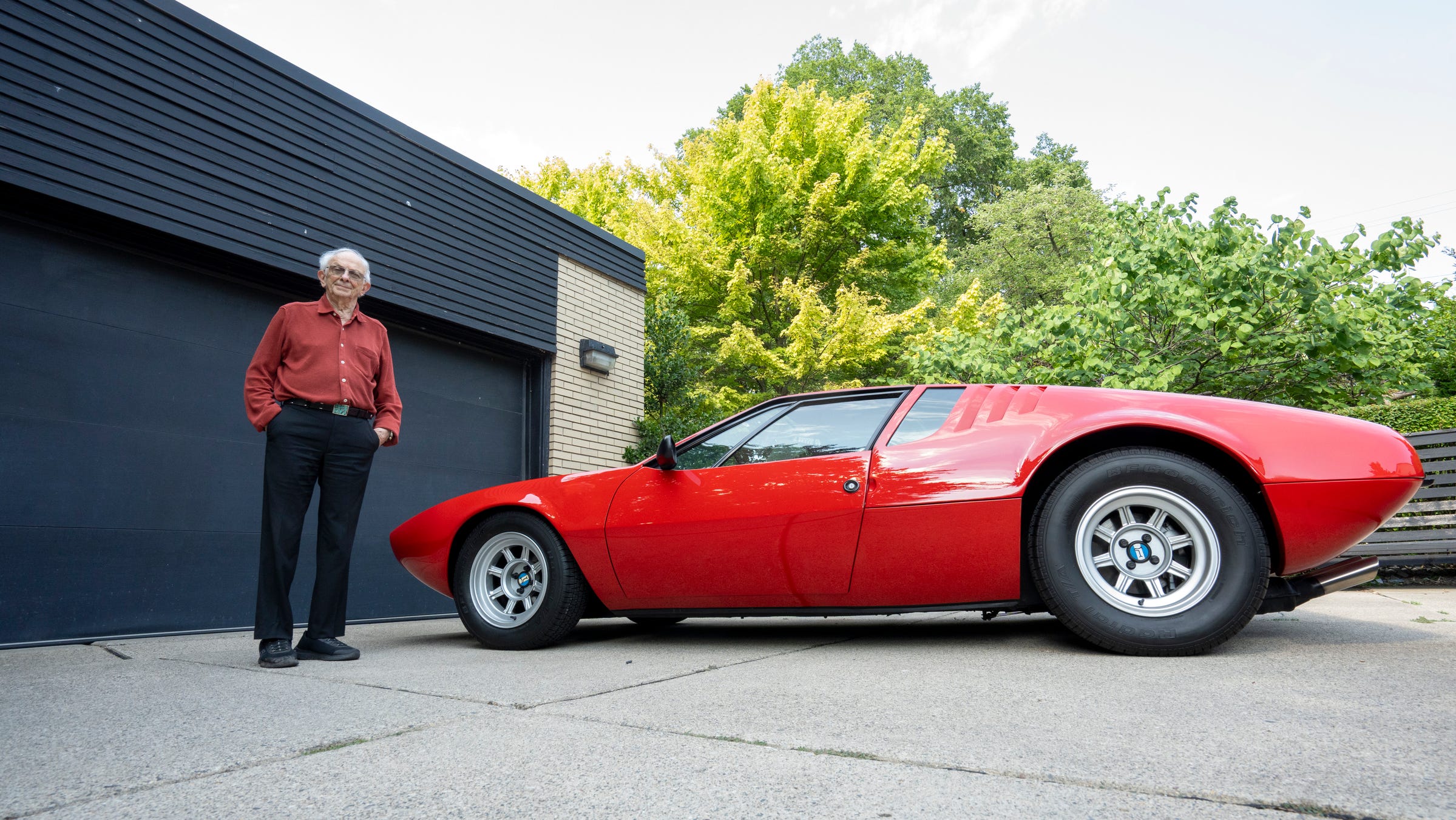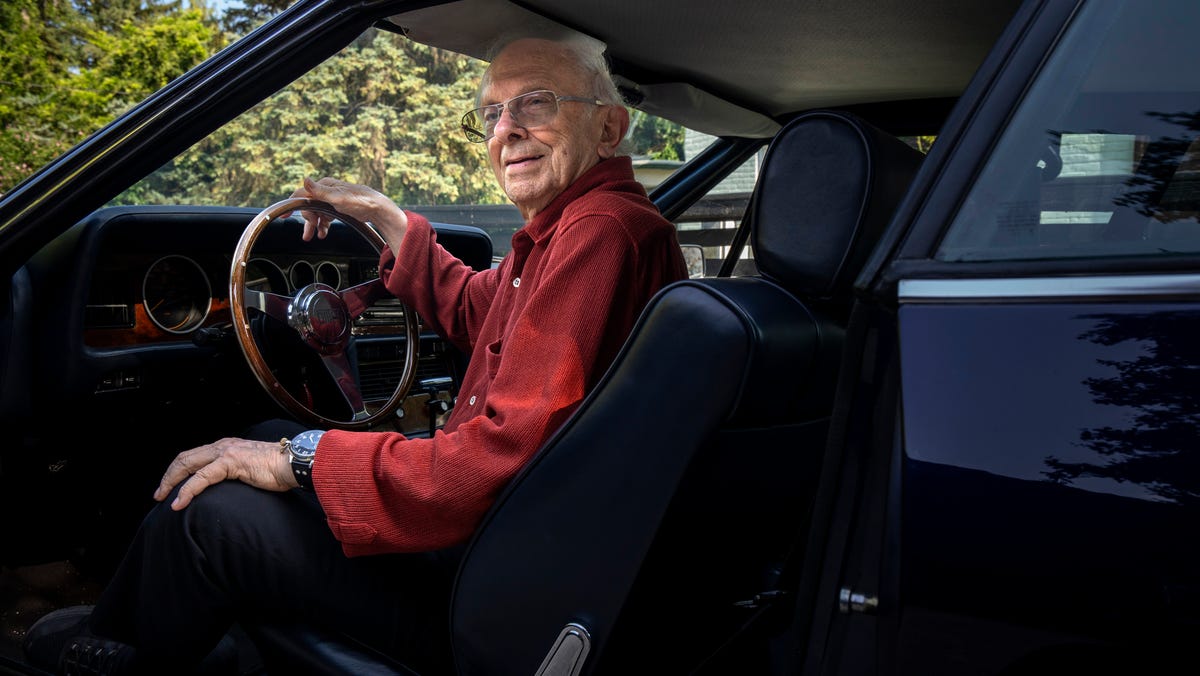
Former top General Motors car designer talks automotive design
Dick Ruzzin, former chief Chevrolet and Cadillac designer at General Motors, shares his thoughts on automotive design.
- In the book, Dick Ruzzin outlines the creation of the world’s first automotive design studio, and the system Earl defined that led to Motorama Cars, the auto show GM staged from 1949 through 1961.
- Ruzzin never spoke to Earl, but said he remembers glimpsing him in the Warren studio when he started at the automaker in 1959.
The Golden Age of the American automobile can be distilled not simply to one era, but down to one vehicle ― the 1966 Oldsmobile Toronado.
At least, that’s according to Dick Ruzzin, former chief Chevrolet and Cadillac designer whose career at General Motors spanned 40 years and who happened to serve as creative designer on the project under Chief Designer Stan Wilen.
Ruzzin’s book “Designing Dreams,” released July 29, centers around the emergence of muscle car culture and the peak creativity and development capacity of the General Motors Styling Staff on the heels of the legendary Harley Earl’s retirement from the Detroit automaker.
The story of Earl and the history of GM Design has been told before, but Ruzzin said previous histories missed direct links to the real people who were there, and who worked immediately after the titan of automotive design.
“This book is not about what was done but about how it was done,” Ruzzin said. “It’s an expression of how a profession was conceived and developed.”
In his book, Ruzzin outlines the creation of the world’s first automotive design studio, and the system Earl defined that led to Motorama Cars, the auto show GM staged from 1949 through 1961. Under GM President Alfred P. Sloane, who created the Art and Color Section now known as GM Design, Earl became the first-ever automotive designer. He introduced clay modeling and pioneered the annual model change, while his “Project Opel” eventually became the Chevrolet Corvette.
Starting at GM Design after Earl’s retirement, like Ruzzin did, is somewhat like entering Disney Studios after Walt Disney’s death ― the first era out from under the shadow of the mastermind who launched the system.
Ruzzin never spoke to Earl, but said he remembers glimpsing him in the Warren studio when he started at the automaker in 1959.
“The people who had been there for Harley Earl told me a lot of stories. But for those of us newer people, who started in 1960, we didn’t really know a lot of the background,” he said. “One day, Bill Mitchell came in with this really tall guy, and everyone whispered, ‘That’s Harley Earl!’ ”
Ruzzin recalls Earl pointing at a vehicle design and noted sheet metal engulfing the taillight. “He said, ‘You know, it’s really good if you could see taillights from the side; you can see a car driving by.’ He didn’t say do that ― he just brought up that point. So, what, 25 years later, we have a government requirement for a side marker light.”
Ruzzin’s description of creativity ― a four-part process that’s never quite complete ― is one element of the book of which he’s most proud: “If you get into the profession, you learn that you can develop creativity as a strategy.”
In the book is a sketch of a Bitter CD done on the back of a yellow envelope Ruzzin sketched in 1971 while working in Germany at Opel Design for Dave Holls. The Bitter sold in Germany and Britain, and only four of the vehicles came to the U.S. One now resides in Ruzzin’s garage in Grosse Pointe Park.
The responsibility of a designer was not lost on Ruzzin, who said that some projects took months if not years to complete, whereas his team finished some designs on their first attempt.
“It’s hard to imagine, even comical to think that a company could spend almost half a billion dollars to build over 300,000 cars based on a single sketch,” he wrote.
Ruzzin describes working in design as rarified, more difficult to obtain than becoming a professional football player in the NFL. He graduated from Michigan State University in 1959 with a degree in industrial design and joined Fisher Body, at the time a GM subsidiary.
To even apply to Design during a recession, he had to quit his job. History, and Ruzzin’s literary career, reflect that his gamble paid off.
His tenure began as the automaker began marketing performance alongside style amid the oncoming wave of “sensible functionalism” represented by compact cars.
Ruzzin worked on the Chevrolet Corvair, generally considered GM’s first compact car and a response to the growing popularity of imported vehicles like the Volkswagen Beetle.
His stint as a junior designer in the Oldsmobile Exterior Studio put him in the drafting process of what would become his most revered vehicle, the Toronado, and launched a 40-year career as a designer at the company. He worked on more than 140 car design programs, starting as creative designer, then studio head, director of design for GM Europe and ultimately director of design for Chevrolet in the U.S.
But the era Ruzzin credits as the Golden Age was wrought with new political and cultural challenges for auto designers.
Consumer advocate Ralph Nader published “Unsafe at Any Speed: The Designed-In Dangers of the American Automobile,” skewering Chevrolet in particular, referring to the Corvair as a “one-vehicle accident.” He charged GM, among other sins, with “excessive ornamentation” and claimed automobile design at the time came at the expense of safety.
From the free love movement to emerging regulations, the design team at GM contended with a slew of changes. In the book, Ruzzin describes the designers as a rare breed of bellbottom-clad business types interested in a vehicle’s artistic merit as much as its corporate achievement.
Throughout the book, Ruzzin hints at what makes for lasting automotive design ― excellent engineering that supports a style that is “graphic, straightforward, and memorable.”
“American design enjoyed a kind of freedom at that time that likely won’t be seen again,” said Matt Anderson, the curator of transportation at the Henry Ford museum. “And as electric cars become more prevalent, that will be more and more the case.”
Jackie Charniga covers General Motors for the Free Press. Reach her at jcharniga@freepress.com.
Source link
#designers #book #explores #Golden #Age #car #design
